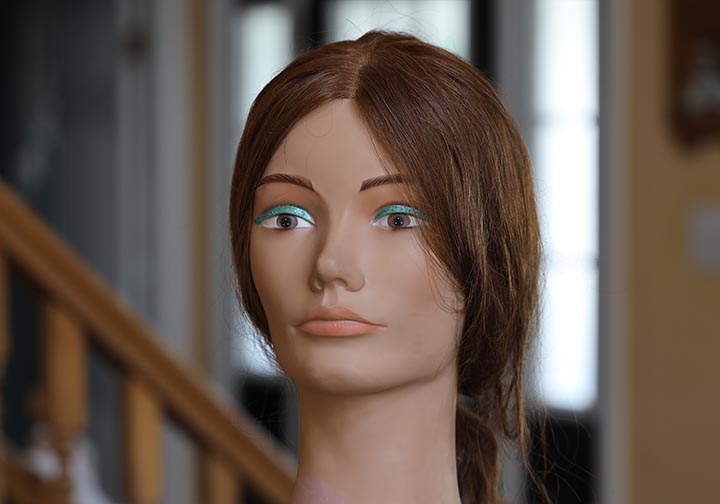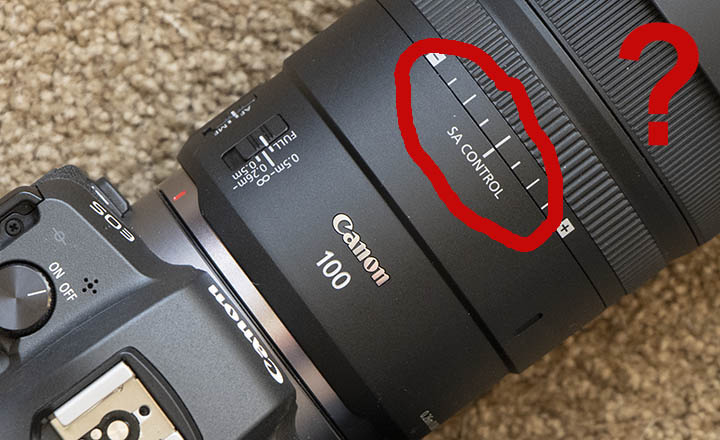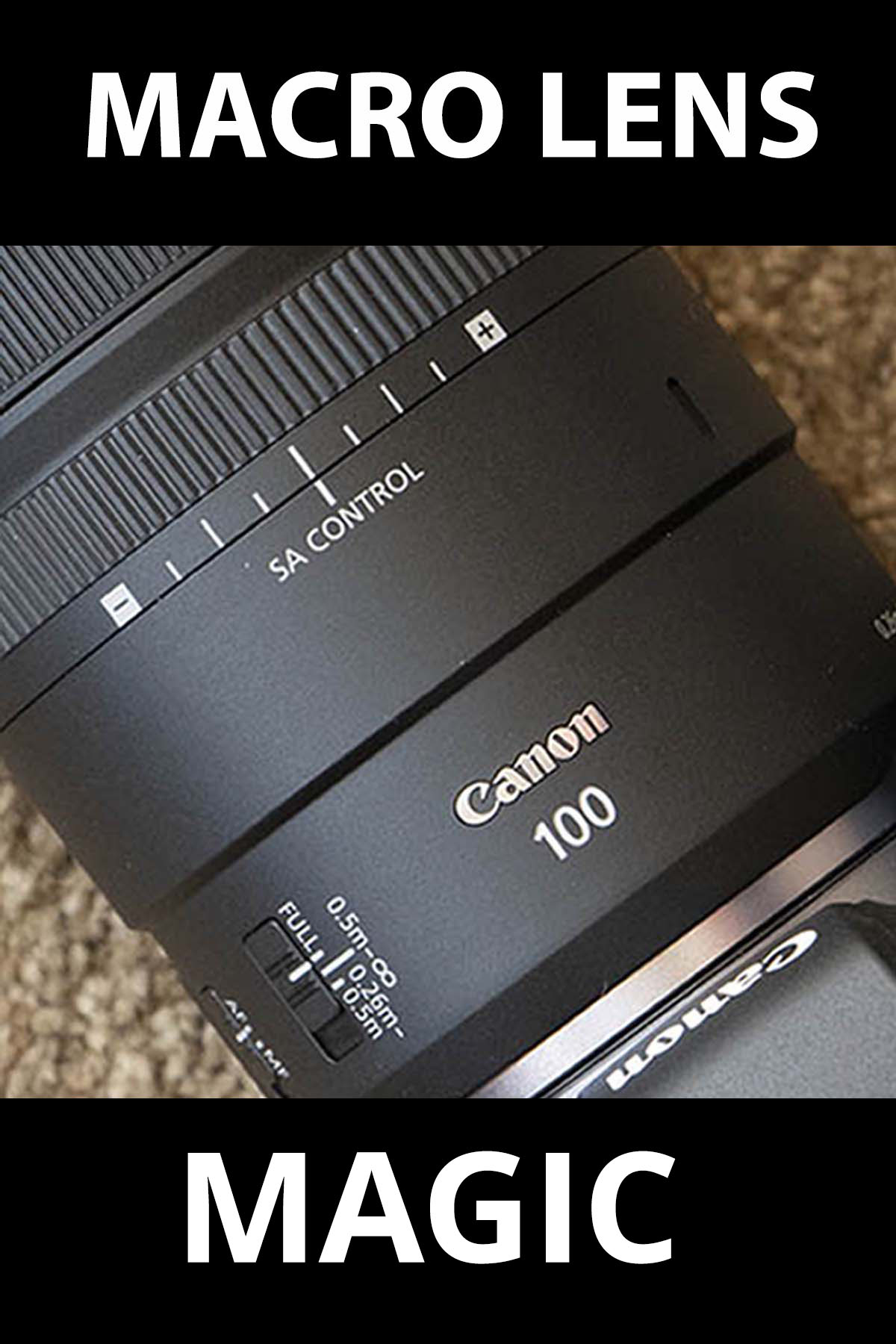The Good And The Bad Of
The Canon RF 100mm Macro SA Lens Control
You're wondering what is SA control on the Canon RF 100mm Lens. It's full name, the Canon RF 100mm F/2.8 Macro IS Lens has a very unique new capability, aptly name spherical aberration or SA for short.
In this post find out what it is, how it works, and the advantages and disadvantages of using the SA (spherical aberration) control on the Canon RF 100mm macro lens. First we'll look at the pros and cons and then you can view my SA test images.
POSITIVES
The first thing we'll look at is the advantages of having SA spherical aberration control feature built into the RF 100mm lens.
- The SA control ring gives you additional creative control on the size and characteristics of the blur both in front of and behind your subject. This is the first Canon lens with this feature.
- The SA control ring includes a lock to prevent accidentally using the feature when you didn't want to.
- This lens gives you the ability for both excellent sharpness and enhanced bokeh.
NEGATIVES
There's usually a downside, so let's take a look at the disadvantages of having an SA feature in your lens.
- You could forget to turn the SA control ring back to its neutral setting and effect he blur when you did not intend too.
- The complexity of the lens design had to increase to include this feature and likely added to a higher price.
- It's possibly one more thing that could break.
SA Test Results
Soft flat backgrounds will not reveal the effects of the SA control as much as point light sources and backgrounds with contrasty areas, so I set up my test with a string of holiday lights against a dark blanket as the background behind my main subject.
I researched other Canon shooters tests on this lens and it was reportedly found out that the pleasing effects from engaging the spherical aberration are likely to happen in the mid-range of f/stops settings. My test revealed that the effect on the bokeh blur was much more pronounced at f/2.8 than f/5.6.
Moving your mouse cursor overtop the image below shows the image with a full negative spherical aberration engaged. Move your mouse off the photo to see the image with the SA control at the neutral position.

Without And With Negative Spherical Aberration
Moving your mouse cursor overtop the image below shows the image with a full positive spherical aberration engaged. Move your mouse off the photo to see the image with the SA control at the neutral position.

Without And With Positive Spherical Aberration
Spherical Aberration on Portraits
I also tested using the RF 100mm SA control ring for shooting a headshot portrait. See the comparison below.

The SA control ring rotated toward the negative side of the lens markings softened the blur. Turning the SA control ring indicator to the positive side of the lens increased the sharpness.
SA Control Ring Summary
Is the SA control ring on the Canon RF 100mm f/2.8L macro lens just a gimmick or is it a useful tool?
Like other features and capabilities of lenses, it takes a bit of experimenting to learn how to get the desirable effect that you're looking for. That's because the effect will change depending on the distance to your subject, the f/stop you choose to use, and the characteristics of the background.
I really like this lens a lot. It's sharp. It focuses fast and the 1.4x macro magnification is a big bonus. I highly recommend the RF 100mm Macro IS highly if you're shooting with any one of the Canon R mirrorless camera bodies. See the related RF 100 articles below my signature.
If you already have the original EF version of this lens, a great performing lens, it may not be enough of an upgrade to justify the investment. You may want to consider one of the other RF lenses.
I'm glad I bought my RF 100mm lens, but not it's not because of the SA feature. I guess I'll have to play around with it more, especially with my macro shooting.
As an Amazon affiliate Canon Camera Geek receives a small commission from qualifying purchases, at NO added cost to you.


Bruce Lovelace is the publisher of Canon Camera Geek. Read more about him on the About Page. He also publishes how to articles and camera gear reviews at the Photography Tips website.
View some of Bruce's photos on Instagram and Flickr. Join the tribe of followers on YouTube. Bruce also runs photo workshops and provides 1 on 1 digital photography coaching.
Recent Articles
-
Choose the Right Memory Card for Your Canon R6 Mark II: Speed And Size
Nov 05, 25 02:04 PM
R6 Mark II Memory Card -
Canon G1x Mark II vs G1X-Side By Side Comparison of Canon G1X Cameras
Oct 22, 25 08:35 AM
G1 X Mark II vs. G1 X: Is the New Version a HUGE Leap... Or a Massive Mistake? Canon responded to the criticisms of the original G1X. Canon G1X Mark II vs G1X -
Sony RX100 III vs G1x Mark II by Canon. Side by Side Comparison
Oct 22, 25 08:07 AM
It's another one of those epic camera battles, this time not the Canon vs Nikon but rather the RX100 III Vs G1X Mark II battle. -
Canon R6 Mark II FAQ. Answers To All of Your Canon R6 M2 Questions
Sep 01, 25 07:51 AM
There's a lot you can easily learn about Canon's mirrorless R6 Mark II camera. Get your questions answered in this R6 Mark II FAQ -
Canon G1X Sensor Size. What Are The Specs on The Canon G1X Sensor
Aug 26, 25 11:39 AM
Here is a comparison of the Canon G1X sensor size with the rest of the "G" series Canon cameras













